Given that we have shown what constitutes a sceptic it is important that I also discuss the main scientific body of the believers and alarmists. The information presented below is based on the article Illusions of Climate Science by William Kininmonth.
The Intergovernmental Panel for Climate Change (IPCC) is a United Nations agency set up in 1988 to be a source of authority and advice to governments in the review of science associated with carbon dioxide and its impacts on climate change. It was co-sponsored into formation by the United Nations Environment Program (UNEP) and the World Meteorological Organisation (WMO). The UNEP along with the environment movement generally were already taking an active role in the promotion of human-caused global warming, based on computer models, they had presented at earlier conferences in 1979 and 1985. This was something that apparently concerned the more conservative science orientated WMO, that the policy proposals were running far ahead of the perceived scientific understanding and that the lead in climate matters was being usurped by the UNEP. So from its outset the IPCC was not just a scientific body but an activist political one with an agenda.
In 1990 the IPCC presented it first assessment report, and in it it confirmed the existence of a greenhouse effect and that increasing levels of CO2 from human emissions will enhance the greenhouse effect, based on computer models. The report also noted many scientific uncertainties on timing, magnitude of effect, or even regional effects of any increase in greenhouse effect. In spite of this the IPCC provided estimates of temperature increases of between 0.2 and 0.5OC per decade and a sea level rise of 6cm over the coming century.
Between Feb 1991 and May 1992 the UN established Intergovernmental Negotiating Committee (INC) met six times and at the Rio de Janeiro Earth Summit of Jun 1992 presented it Framework Convention on Climate Change (UNFCCC). The convention’s objective was to convince parties to adopt and achieve stabilization of greenhouse gas concentrations in the atmosphere at a level that would prevent dangerous anthropogenic (human caused) interference with the climate system.
According to the former head of Australia’s National Climate Centre and consultant to the WMO, William Kininmonth (M.Sc, M.Admin) :
What is not generally understood is that the objective of the Convention is not to prevent climate change, dangerous or otherwise, but to prevent dangerous climate change caused by human activity.
….“Climate change” means a change of climate which is attributed directly or indirectly to human activity that alters the composition of the global atmosphere and which is in addition to natural climate variability observed over comparable time periods.
The negotiations for the UN Framework Convention were carried out against a background of politics rather than science and logic. Many undercurrents could be clearly discerned that reflected the various vested national and regional interests.
….Most intriguing was the obvious tension between the EU and the US.”….the EU was in a strong position to comply with a low end requirement for 20 per cent reduction in emissions from the propitious 1990 baseline. …the USA had little prospect of expanding nuclear energy. Any move to impose energy constraints through a reduction in carbon dioxide emissions would hit the US industry base with its reliance on fossil fuels, especially coal. There was a clear potential to shift the comparative advantage for producing goods and services from the USA to the EU, with advantages for European economies.
So there is a clear economic and political motive for the European nations to promote Climate Change other than for the good of the planet. Add to this the rising economic status of China, India and Brazil and there is a need for the European economies to be as strong as possible.
Tuesday, August 18, 2009
Subscribe to:
Post Comments (Atom)




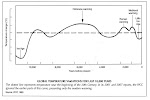


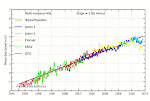

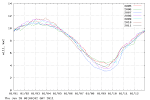

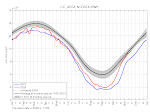

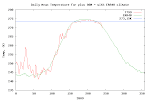
No comments:
Post a Comment